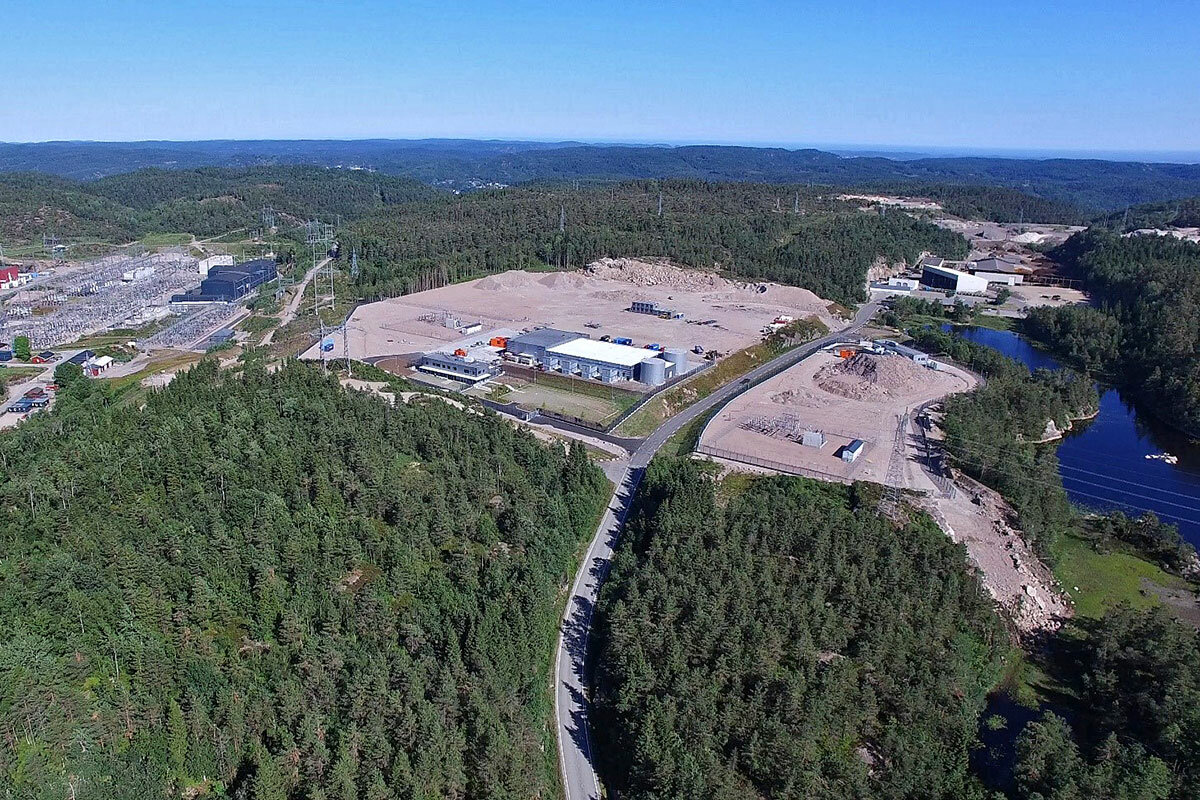Zoom isn’t carbon-free. The climate costs of staying home.
Loading...
The pandemic has changed the way we live, work, learn, and socialize. For many, it’s forced daily activities online, and when people do log off and go outside, some have seen a world healing – smog clearing over cities, stars looking brighter, and wildlife returning to old habitats.
These observations reinforced a common belief that a digital world is an eco-friendly world. Experts say the reality is far more complicated.
How does working from home affect the environment?
Why We Wrote This
When work, play, and school go virtual, we might assume that at least our lives have become greener. There’s some truth to that, but the pandemic is raising the question: What’s the carbon footprint of a stay-home lifestyle?
Every time you send a message on Slack or search something on Google, you’re relying on data centers. These information factories are packed with servers, routers, and other equipment that makes the internet possible. Estimates vary, but in general, data centers are thought to use anywhere from 2% to 5% of the world’s electricity, and produce as much carbon dioxide as the aviation industry.
On a user level, researchers found that an hour of high-definition video streaming – be it the latest episode of “Bridgerton” or a Monday morning meeting – can create up to a pound of CO2 emissions, similar to driving a mile in an average car. That’s a high-end estimate, drawing on data gathered by the International Energy Agency. While the carbon output will often be much lower, based on factors like electric power sources and the graphics quality of a video stream, the key point is that digital lifestyles come with a carbon footprint.
In fact, there are many hidden environmental costs beyond greenhouse gases. Personal devices regularly break or become outdated, generating electronic waste, and those massive data centers also need land and water to operate.
The journal Resources, Conservation & Recycling recently published a first-of-its-kind study looking at the internet’s land and water footprints in addition to its greenhouse gas emissions. Researchers from Purdue University, Yale University, and the Massachusetts Institute of Technology found that data centers used roughly 687 million gallons of water every year, and had an estimated land footprint of 1,300 square miles, nearly three times the size of Los Angeles. On emissions alone, the group found data centers push out 97 million metric tons of carbon dioxide a year.
“Our energy systems in general are becoming less carbon intensive,” says Renee Obringer, a research fellow at the National Socio-Environmental Synthesis Center and lead author of the study. But especially as more countries embrace renewable forms of energy, she says it’s important to monitor those other environmental impacts.
Wait, so is it better to work from the office?
Not necessarily. Right now, videoconferencing is a necessity, and in many cases, there can be a net environmental gain to going digital, but experts want to push back on the assumption that online services are inherently green.
“We were originally sold this idea by corporations that having paperless offices would be an environmental benefit,” says Jess McLean, a senior lecturer in geography at Australia’s Macquarie University, who studies how digital technologies have become entrenched in modern life. “Thinking critically about whether digital tech is actually environmentally sustainable is not that convenient now.”
“It’s also the case that we don’t see a lot of the infrastructure that supports use of digital technology,” she adds, citing satellites in space, cables running underground, and servers stored in basements and windowless warehouses all around the world. “They are often not even understood as a part of our digital ecosystem.”
Digital companies can market themselves as “green alternatives” without reporting how much data, electricity, water, or land their products use. That kind of information would make it easier for scientists like Dr. Obringer to track the internet’s environmental footprint over time, and for consumers to educate themselves about their technology choices.
How can I make my online life greener?
There are several ways users can minimize their environmental footprint, and possibly save time and money as well. These include limiting social media and gaming time, deleting unnecessary emails and other files stored on the cloud, and downgrading streaming subscriptions.
“Reducing video quality can have a really big impact,” says Dr. Obringer. “Our study showed that by going from your 4k, Ultra HD Netflix plan and dropping that down to a standard definition, your personal footprint would be reduced by about 86%.”
This is true for Zoom, too. Based on researchers’ estimates, users can reduce their carbon footprint by 96% by turning off their camera during work meetings. For someone with daily meetings, using the voice-only option would also save 532 liters of water – roughly three bathtubs – and 1.7 square feet of land every month.
Pandemic or not, digital lifestyles have become ubiquitous. But a goal can be to rely increasingly on renewable sources of energy, while seeking to minimize other environmental impacts.
Both Dr. Obringer and Dr. McLean agree that companies and lawmakers have a significant role to play, starting with ensuring greater transparency about internet companies’ data usage.
“Individuals shouldn’t necessarily be held to account for the vast environmental costs of digital technologies,” says Dr. McLean. “In fact, we need to have the structures in place that make sure it’s easy to make those environmentally sound decisions.”







